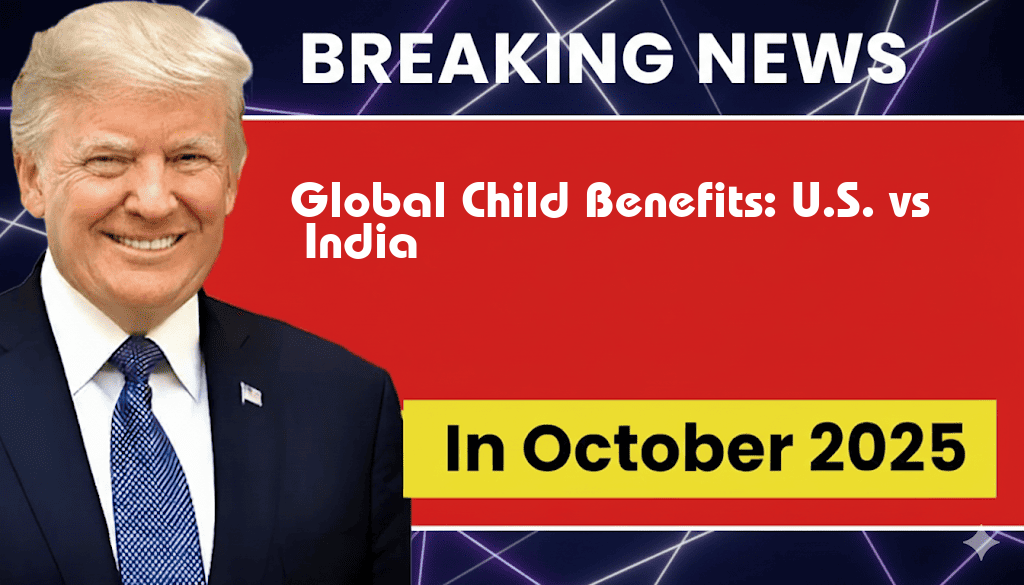Comparing Global Child Benefits: $2,200 Credit in the U.S. vs ₹1,65,000 in India
The landscape of child benefits varies significantly across the globe, with families in the United States and India experiencing different financial support structures. In the U.S., eligible families can receive a child tax credit amounting to $2,200 per child, which is designed to ease the financial burden of raising children. Meanwhile, in India, the government has introduced a Child Welfare Scheme that offers an impressive ₹1,65,000 (approximately $2,000) per year for families, aimed at improving child health and education. This article delves into the nuances of these child benefit programs, examining how they compare in terms of value, accessibility, and the socio-economic impact on families in their respective countries.
Understanding the U.S. Child Tax Credit
The Child Tax Credit (CTC) in the United States has undergone significant changes in recent years, especially following the American Rescue Plan Act of 2021. This legislation enhanced the credit for the 2021 tax year, allowing families to claim up to $3,600 for children under the age of six and $3,000 for children aged six to seventeen. However, the baseline credit remains at $2,200 per child for the 2022 tax year.
- Eligibility: The CTC is available to families with a modified adjusted gross income below certain thresholds, which vary based on filing status.
- Access: The credit is partially refundable, meaning that even families with little or no income can receive funds, promoting equity.
- Impact: The CTC aims to alleviate poverty and assist with basic needs, contributing to improved child welfare.
India’s Child Welfare Scheme
In contrast, India’s Child Welfare Scheme offers a substantial sum of ₹1,65,000 per year, targeted at families with children aged between 0 to 6 years. This initiative is part of a broader strategy to ensure child health, nutrition, and education. The scheme is inclusive and aims to reduce infant mortality rates and promote better health outcomes for children.
- Eligibility: The scheme is generally available to families below the poverty line, with specific criteria based on income and family size.
- Access: Benefits are typically disbursed through state-run programs and can be affected by local governance.
- Impact: The scheme is designed to ensure that children receive adequate nutrition and education, thereby improving overall quality of life.
Comparative Analysis of Child Benefits
| Feature | United States | India |
|---|---|---|
| Annual Benefit Amount | $2,200 per child | ₹1,65,000 (approx. $2,000) |
| Age Range | 0-17 years | 0-6 years |
| Refundability | Partially refundable | Non-refundable |
| Eligibility Criteria | Income-based thresholds | Below poverty line |
Socio-Economic Impact
The differences in child benefit programs reflect larger socio-economic contexts. In the U.S., the CTC serves as a vital support system for middle and low-income families, helping to reduce child poverty levels, which have been a growing concern. Research indicates that enhancements to the CTC have led to significant reductions in poverty rates among children, fostering better educational outcomes and health.
Conversely, India’s Child Welfare Scheme addresses acute issues related to child health and nutrition, particularly in rural areas where poverty is rampant. The financial support helps families afford essential services that can drastically improve the living conditions of children. However, challenges remain in terms of accessibility and efficiency, as local execution can vary widely.
Conclusion
Both the U.S. and India have implemented child benefit programs aimed at supporting families, but the differences in their structures and impacts highlight the varying challenges each country faces. While the financial amounts may appear similar when converted to a common currency, the socio-economic realities dictate their effectiveness. Understanding these programs in a global context can provide insights into best practices that could be beneficial in enhancing child welfare worldwide.
For more information on child benefits and related policies, you can visit Forbes and Wikipedia.
Frequently Asked Questions
What is the amount of child benefit in the U.S.?
The child benefit in the U.S. is a $2,200 credit per eligible child.
How much is the child benefit in India?
In India, the child benefit is ₹1,65,000 for each eligible child.
How do the child benefits in the U.S. and India compare?
The child benefit in the U.S. is a $2,200 credit, while in India, it amounts to ₹1,65,000. The comparison highlights significant differences in financial support for families.
Are there eligibility criteria for these child benefits?
Yes, both the U.S. and India have specific eligibility criteria that families must meet to qualify for these child benefits.
What impact do these child benefits have on families?
The child benefits in both countries aim to provide financial relief and support to families, helping to improve child welfare and reduce poverty.
